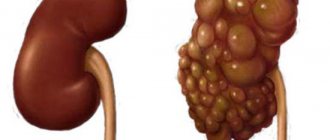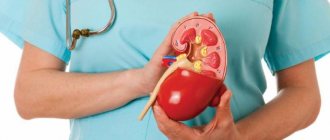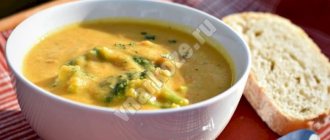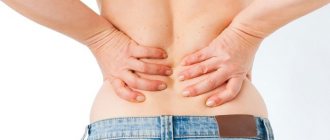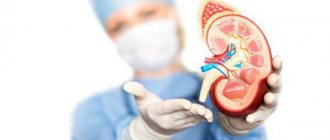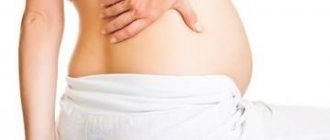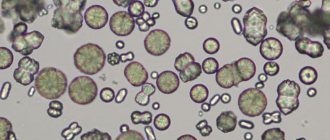What is the diet based on?
In addition to choosing the right foods for urolithiasis in men, you need to drink plenty of fluids. We are talking about water, compotes, fruit drinks, herbal decoctions; tea and coffee are not included in the amount of liquid consumed. Every day you need to drink about 1.5-2 liters of water. Preference is given to non-mineral water.
When the normal concentration of ions in the kidneys increases, stones appear. Plenty of fluids and proper nutrition will reduce this concentration.
Dietary nutrition will need to be followed for several years until complete recovery, or throughout life in chronic forms of the disease. Therefore, the diet must be energetically valuable and balanced.
In addition to kidney stones, you simultaneously need to treat concomitant diseases, for example, dysbiosis, pancreatitis, cholecystitis, etc.
Meals should be divided into 5-6 meals. You cannot fill your stomach too much in one meal and load other digestive organs.
The menu is drawn up after examining the body and determining the composition of the stones.
Stones in the kidneys
If you have kidney stones, proper nutrition (diet) will only contribute to your speedy recovery.
One of the main consequences of this disease is the formation of oxalic acid in the body. This happens in large quantities, so it is important to exclude from the menu foods that contain large amounts of this substance.
For drinks, give preference to plain water and juices. In this case, you also need to ensure that the amount of salt is minimal. It is recommended to eat stews and vegetable soups, lean boiled fish and meats, bread, cauliflower and white cabbage, mashed potatoes, and cucumbers.
As for fruits and berries, you should completely avoid strawberries, plums, gooseberries and currants.
If you have kidney stones, it is important to follow certain rules in your diet. Eliminate foods high in purines from your menu. These are meat by-products, canned food, pickles, smoked meats, rich and spicy soups. Choose your vegetables carefully; avoid sorrel, asparagus, celery, spinach and soy.
Diet and pregnancy
The renal diet during pregnancy is based on the same rules as for other patients, but there are a number of features:
- In case of acute inflammatory processes in the kidneys, you can increase the volume of drinks and liquid food consumed to 2 liters per day.
- It is important to control the functioning of the gastrointestinal tract and avoid constipation - they support inflammation. If stool is disrupted, beets and prunes are introduced into the diet.
- It is advisable that the diet for kidney disease in pregnant women contains more vitamins (decoction of currant leaves, rose hips or cranberries).
What can you eat?
At the same time, you should not worry about the fact that you will have to significantly limit your own diet. The list of permitted foods in a diet for kidney pain is quite extensive.
Of flour products, only white wheat bread with bran or protein-free bread is allowed. It is important that it is baked without adding salt.
Mostly vegetarian soups with the addition of cereals, vegetables, and pasta are recommended as first courses. Instead of salt, season them with butter, lemon juice, and herbs. During a diet for kidney pain, allowed foods are low-fat fish, which can be baked or boiled. In the first two weeks of intensive treatment, any meat should be completely excluded from the diet. Then you can include boiled lean meat in the menu. It can be fried later.
Eggs are allowed to be consumed during a diet for kidney disease in women. You can eat no more than one or two pieces per day, soft-boiled or in the form of a protein omelet. You can consume fermented milk drinks, milk, and natural cottage cheese in limited quantities; it is recommended to prepare puddings or casseroles.
Greens and vegetables should be raw or boiled. This could be carrots, potatoes, beets, lettuce, cauliflower, parsley, cucumbers, dill. Fruits and berries can be consumed both natural and boiled. Particular preference should be given to melons and watermelons. For desserts, it is best to choose jelly, puree, mousses prepared with starch, honey, sugar, jam and preserves.
Pasta and cereal products should be limited, opting for specialty pasta and sago. Only refractory fats are allowed to be included in the diet; fruit and vegetable salads, veal, mild cheese, vinaigrette with vegetable oil, and jellied fish are allowed as snacks.
Dishes can be diluted with various sauces. First of all, it is recommended to consume sour cream, milk, fruit, vegetable and sweet sauces. But mushroom, meat and fish broths should be excluded.
For drinks, weak tea, preferably diluted with milk, is welcome. You can drink berry, vegetable and fruit juices diluted with water in a one to one ratio; a decoction of black currants and rose hips will be useful.
What salads can you eat?
A diet for kidney disease in women and men involves a complete rejection of hot and fatty sauces. So all salads that are dressed with mayonnaise are prohibited. On holidays (for example, New Year and birthday), you can treat yourself to the usual Olivier salad or crab salad, just season it with low-fat sour cream. Mayonnaise is a very fatty and heavy sauce, so people with kidney disease will have to exclude it from their diet forever.
It is acceptable to eat light vegetable salads - carrot, beetroot, Greek, Caesar (with a minimum amount of meat and without cheese). All these salads should be seasoned only with cold-pressed vegetable oils.
Menu and recipes for a salt-free diet
A salt-free diet means that absolutely no salt is used during cooking. But this does not mean that the patient’s food will be bland and “boring”, because the taste of the dish consists of many factors. Sometimes it’s enough just to correctly combine products to create a culinary masterpiece, even suitable for feeding people with acute kidney disease.
Sample menu for a week for patients on a salt-free diet:
| Day of the week | Menu |
| Monday | cottage cheese + tea + toast with jam/vegetable soup + fermented milk drink/potatoes (boiled in pieces or mashed) + fresh vegetables + berry or rosehip compote |
| Tuesday | glass of milk + toast or unsweetened pastries/fish cutlets + buckwheat porridge + jelly from any berries or milk/salad without meat and fish + any drink |
| Wednesday | omelette + tea/buckwheat soup + chicken cutlets + diluted juice/cottage cheese + kefir |
| Thursday | toast with honey + tea/stewed vegetables + baked meat + berry compote/vinaigrette + tea |
| Friday | cottage cheese + sour cream + green tea or rosehip decoction/buckwheat porridge + grilled vegetables + jelly or a glass of milk/fruit salad + juice |
| Saturday | yogurt with fruits or berries + tea/meat cutlets with boiled cauliflower + orange juice/toast with jam + any juice |
| Sunday | cottage cheese with sour cream + unsweetened tea/fruit lard + kefir/fresh vegetable salad with sour cream |
This is a sample menu during acute kidney disease. If remission occurs or 10–15 days of therapy have passed, then the diet expands significantly - for example, you can add baked apples, vegetable casseroles and other dishes.
They are easy to prepare:
| Name | Recipe |
| Baked apple | Take a medium-sized fruit, peel it and boil for 2 minutes in boiling water, adding a little citric acid or citrus juice. Then cool the apple, remove the core and place berry jam in the resulting hole. Next, the dish is baked in the oven for 20 minutes and then sprinkled with powdered sugar. |
| Vegetable casserole | Place potatoes, onions, tomatoes, white cabbage and carrots in layers on a baking sheet - they must first be cut into thin slices. You can coat the layers with sour cream and add a little sweet paprika or suneli hops to improve the taste of the finished dish. All this is baked in the oven for 20 minutes, 5 minutes before the end of cooking you need to sprinkle grated cheese on top. |
| Millet porridge balls | Pour 150 ml of milk over the finished porridge (300 g) and add a small amount of sugar. Then add 1 chicken egg and a pinch of cardamom to the mixture. When finished, the mass will be elastic, similar to plasticine; meatballs are prepared from it (molded by hand), rolled in breadcrumbs and fried in butter until golden brown. |
In addition, you can bake pasta in the oven by mixing it with a raw egg and sprinkling mild cheese on top. There is a recipe for sweet pilaf:
- Soak prunes and dried apricots - 100 g each - overnight.
- Cook rice until half cooked – 300 g.
- Fry steamed dried fruits in butter.
- Add the “frying” to the rice and bring the porridge to readiness.
This pilaf can be enriched with sugar or honey, cinnamon, you can also add orange zest or slices of fresh apples - there are many options.
What herbs are useful for urolithiasis: recipes
Over a long period of treatment with folk remedies, doctors have studied the beneficial properties of herbs. To treat urolithiasis of the kidneys, plants such as chamomile, peppermint, sage, St. John's wort, plantain leaves, knotweed, rose hips, yarrow, and heather are used. This list could go on for a long time, but for now let’s look at the healing properties of the main herbal remedies that are used to expel stones from the body.
- Chamomile - this plant is known for its antiseptic effect, which is very important in the presence of stones in the kidneys and urinary ducts. As doctors note, in most laboratory urine tests in patients, the presence of an inflammatory reaction is observed. And this is not surprising, because the body protects itself from a foreign body. Chamomile not only relieves pain and spasms of the kidneys, but also eliminates inflammation.
- St. John's wort also has an antiseptic effect. In addition, this plant relaxes the smooth muscles of the internal organs and eliminates spasms when stones pass through narrow places in the urinary ducts.
- Plantain is famous for its antiseptic effect - even in childhood we applied it to broken knees to prevent suppuration. The use of plantain is also relevant in the treatment of urolithiasis. In addition, the plant has hypotensive properties. This is especially important for those people whose stones have sharp corners (coralline oxalates).
- Rosehip is useful not only for treating the heart, because vitamin C has a positive effect on the restoration of damaged tissue structure, which means that changes in urolithiasis can be reversible with the help of ascorbic acid. Rose hips are famous for their diuretic properties.
- Cranberry is indicated in limited quantities for urolithiasis, but the berry has a powerful anti-inflammatory effect and improves immunity. This will ensure that stones will not form again.
- Birch buds help remove excess fluid from the body. When treating with folk remedies, doctors recommend drinking at least 2 liters of water per day so that stones and sand are well removed from the body. However, if there is swelling, they need to be eliminated, which is where diuretic birch buds will help us.
- Yarrow is an excellent antiseptic that helps eliminate pain when stones move. Regular addition to tea can improve the patient's immunity.
What foods are best to avoid?
The renal diet normalizes the functioning of the kidneys and adrenal glands, which are responsible for the exchange of fluid and salt in the human body, by reducing the consumption of fluid and protein. You need to eat in small portions up to 5 times a day.
Which products are best to avoid:
- broths and sauces from meat, fish or mushrooms;
- ready-made or raw semi-finished products prepared with the use of flavor enhancers (semi-finished minced meat products, sausages, etc.);
- vegetables canned using vinegar (tomatoes, mushrooms, eggplants, pickled cucumbers, olives, bell peppers);
- canned meat and fish (stewed meat, sprats, porridge with meat);
- smoked and sausage products, regardless of type or composition;
- sea or river fish of fatty varieties;
- instant food products, snacks;
- fried or deep-fried dishes (belyashi, pasties, pies, French fries);
- fatty and spicy sauces, ketchup with a high content of salt and vinegar (mayonnaise);
- greens with a high acid content (sorrel, spinach, rhubarb, mustard, onion, garlic);
- chocolate;
- carbonated drinks, coffee;
- alcoholic drinks.
Consultation with a specialist
You cannot start treating urolithiasis on your own with herbs. This can lead to serious complications, causing the movement of large stones that get stuck in the kidneys or narrow urinary tract. The consequence of such self-medication is emergency surgery. Therefore, any impact on the disease should begin with a comprehensive diagnosis by a urologist.
As a rule, the doctor prescribes a series of laboratory and hardware tests of the kidneys and bladder, which clarify the picture of the disease. Using ultrasound, a specialist determines the location of stones, their size and shape, which is very important for the subsequent choice of treatment methods. The chemical composition of the formations is no less significant - urates, oxalates or phosphates.
If an ultrasound examination shows that the stones in the kidneys or bladder are small, which means they are in the process of growing, then they are recommended to be removed without delaying treatment. It is precisely because the removal of small stones in the best way occurs through herbal medicine that doctors consider diuretic herbal preparations as a priority.
Protein-free and low-protein diet: what is it?
A protein diet for kidney problems is prohibited. You should not completely eliminate salt - this can lead to kidney failure.
The main task is to reduce the workload of the affected kidney as much as possible. For these purposes, the patient is prescribed a protein-free or low-protein diet. The basic rule is less animal proteins and more carbohydrates.
Protein ingredients in the diet do not exceed 0.7 g/kg body weight. 70% of proteins must come from animal products, otherwise amino acid deficiency is possible.
This restriction should be adhered to for no more than 2 weeks.
Indications for the diet:
- inflammation of the genitourinary system (pyelonephritis, glomerulonephritis, cystitis);
- kidney failure;
- kidney stone disease.
Kidney treatment
There are several methods for treating kidney disease:
- Surgical intervention.
- Medications.
- Folk remedies.
- Diet.
For some types of diseases, treatment methods are combined. To treat the kidneys, a nephrologist may prescribe both diet and medications. The diet itself for kidney disease differs for diseases or can have a preventive effect, and is aimed at correcting metabolic disorders of the kidneys.
Based on the tests obtained and the diagnosis, the diet may be changed as follows. Surgery may be prescribed to treat a kidney cyst.
If a patient has chronic renal failure, protein intake in the diet is reduced. If protein is present in urine test results, on the contrary, their presence in food increases.
In case of swelling, limit salt intake. In some cases, reduce water consumption or stop taking diuretic products and medications.
What to avoid if you have kidney disease
Alcoholic drinks and sweet carbonated drinks are prohibited for consumption by all patients, regardless of the diagnosis and form of the pathology (exacerbation, remission). There are a number of products that are also contraindicated for inclusion in the diet:
- any fatty fish, it is advisable to abandon the inhabitants of the seas and consume only river products,
- radish, spinach, radish, sorrel, rhubarb,
- meat delicacies, including smoked meats,
- broths with mushrooms and fatty fish,
- mustard, hot pepper, garlic, cilantro,
- cocoa,
- canned foods, including homemade marinades,
- natural and instant coffee,
- fat meat.
You should not prepare dishes by “aggressively” frying foods - for example, it is better to boil meat rather than fry it, make omelettes in the oven, and stew or grill vegetables. It will be necessary to abandon “industrial” sauces - ketchups and mayonnaise are prohibited.
Diet for kidney disease is considered an important component of therapy. Even if medications are taken correctly, but the recommended diet is not followed, recovery will not occur or it will be long-term and with complications.
Moreover, ignoring the prescriptions of nutritionists can lead to the transformation of an acute form of pathology into a chronic one. And this is fraught with serious complications, including kidney failure and disability.
Is it possible to drink beer if you have urolithiasis?
The opinion of experts is divided into two opposite sides regarding the use of beer. Beer is a diuretic drink, which is a priority for urolithiasis. Urea, sand and harmful substances are eliminated from the body more quickly, and the concentration of salts in the urine decreases. If stones can be crushed, then beer will help reduce and remove them. Oxolate and urate stones do not fit this rule.
At the same time, beer is a carbonated drink. Even sparkling mineral water is not recommended for kidney stones. Drinking too much beer can create pressure in the kidneys and cause stones to move. If the stones are large, then their movement will cause discomfort until an ambulance is called. Beer in small doses is allowed for urolithiasis. You can drink no more than 0.5 liters of the drink at one time.
On the other hand, beer and other alcoholic drinks are not recommended for any diseases of the internal organs. The load on all organs increases: stomach, liver, kidneys, heart. Each organ passes toxins through itself, the kidneys become dehydrated.
Of all alcoholic beverages, only beer without GMOs and preservatives is allowed. Some doctors agree that drinking beer is a preventive measure for urolithiasis.
Phosphorus, sodium and proteins
These are the three components that you should pay special attention to when you are on a diet due to some kind of kidney ailment.
Proteins are considered one of the most important components in our food. They are required to build almost all existing structures of the body. But they also have a downside - creatinine, urea and other substances that have a negative impact on our health. All these are nitrogenous substances that must be excreted in the urine. At least, this is the situation when the body is in normal condition. If the kidneys become inflamed, the excretory and filtration functions suffer. Because of this, toxins remain in our body, having a negative effect on internal organs. In this case, protein intake should be sharply reduced. However, it cannot be completely excluded from the diet, since it is of great importance for maintaining the defenses of our body.
As you already know, in case of kidney diseases, disturbances occur in the excretion of salts from the body. Because of this, phosphorus begins to accumulate. When there is too much of it, calcium begins to be washed out of bone tissue, and this is fraught with osteoporosis. Please note that phosphorus is found in many foods, most of all in legumes, dairy products, cocoa, peanuts, Coca-Cola and beer.
Sodium leads to water retention in the body. This affects the increase in blood pressure and the formation of edema. So if you have kidney disease, the amount of this substance you eat should be minimized. In most cases, sodium enters the body through pickles and table salt.
Features of the diet for kidney problems
A diet for kidney pathologies involves a diet depending on the disease and stage: acute form, recovery or remission. In this regard, the diet plan is prescribed by the doctor individually for each patient. Despite the differences in jades, there are a number of basic principles of table No. 7.
Types of diet for the kidneys:
- Table No. 7A. The toughest option with a low-protein and salt-free menu. The protein content in the diet is reduced to 20 g, salt - to 2.5 g, liquid volume - to 0.5 l. Prescribed for severe exacerbations of nephritis.
- No. 7B. The amount of protein is up to 40 g. They switch to the diet after the symptoms of exacerbation have stopped.
- No. 7B. Proteins - up to 125 g. This table is used for proteinuria, when protein is actively excreted in the urine. Protein deficiency is compensated by food rich in proteins.
- No. 7G. No more than 60 g of proteins, 0.7 liters of liquid and up to 2-3 g of salt. The diet is prescribed for people undergoing dialysis.
Diet principle
When the kidneys hurt, the diet should alleviate the patient’s condition as much as possible. To do this, you need to make sure that the amount of protein you consume per day does not exceed 20 - 25 g. Vegetable proteins are the first to be reduced.
These include flour products, cereals, and legumes. In terms of their biological value, they are significantly inferior to animal proteins, while significantly overloading the body with harmful products.
In the early stages of various kidney diseases, the diet for kidney disease in men should control not only the amount of protein consumed, but also phosphorus and sodium. Particular attention should be paid to maintaining a normal weight and calorie intake for your body constitution.
The daily diet should have the following restrictions: up to 80 g of fat and no more than 500 g of carbohydrates, total calorie content - up to 3000 kcal.
Nutritional Features
Dietary nutrition for kidney disease in pregnant women is of particular importance. During this period, medications are undesirable, and only by adjusting the diet can the harmful effects of the disease be reduced. An exacerbation can lead to the death of a child, so there are no options here. Proper food is steamed or boiled, only fresh and healthy products are selected.
The amount of liquid is 2 liters per day. For kidney pain, you can drink pomegranate juice, rosehip or cranberry infusion, or compote with dried apples. When there is pain in the lumbar region, give up protein foods for a day. During pregnancy, you can drink cranberry juice. You will have to abstain from store-bought kvass.
A diet for kidney pain can provide significant assistance in the fight against the disease in combination with drug treatment. This organ plays a major role in maintaining water-salt balance, releasing metabolic products, helping to protect the body from all sorts of negative changes occurring inside our body.
Doctors recommend following a special diet for kidney pain. It has its own characteristics depending on the stage of the disease. Therefore, in each specific case, nutrition for the patient should be selected individually. To do this, you need to consult your doctor. Only a doctor can accurately determine what amount of liquid, protein and salt will be optimal for the patient. This article provides general guidelines only.
Rules for creating a protein-free diet
The protein-free diet menu consists of a large number of plant-based products and a maximum reduction of meat, fish and milk with fermented milk products. Doctors give the following recommendations for proper preparation of such a diet:
- drinking should be plentiful - this is not typical for urological patients, so this point should be discussed with your doctor,
- salt is sharply limited - its complete exclusion would be optimal,
- sweets, desserts are not advisable - sugar is contraindicated on a protein-free diet, but can be consumed in small quantities,
- meat and fish, milk, fermented milk products are prohibited.
You need to have at least 5 meals a day, of which 3 should be main meals and 2 snacks. You need to monitor the calorie content of the menu; an adult should receive at least 30 kcal per 1 kg of weight per day.
It is easy to replace prohibited foods - you can cook vegetable cutlets, puddings, and instead of regular milk, drink vegetable milk (almond, coconut, soy), but also in limited quantities. It is important to ensure that protein is removed from the kidneys along with urine, and as soon as the indicators return to normal, it will be possible to supplement the menu with familiar dishes.
Consequences of not following the diet
Failure to comply with a therapeutic diet for kidney disease causes the following complications and painful conditions:
- paranephritis – inflammation of tissues near the kidneys;
- urolithiasis;
- ulcers in the kidneys;
- acute renal failure;
- general purulent infection;
- bacterial shock.
Violation of a strict diet leads to a sharp deterioration in the patient’s well-being. Compliance with dietary rules for kidney pyelonephritis in women is important and of paramount importance. A therapeutic diet prescribed at the same time as taking medications will help improve kidney function, relieve discomfort and symptoms, and lead to a complete recovery.
Prohibited Products
During a diet for kidney treatment, some foods and drinks will have to be completely abandoned. Especially if your disease is in the acute stage.
All salty foods, any carbonated drinks, as well as bread (both black and white) are prohibited. Fish, meat and mushroom broths, fatty fish, poultry should be minimized, or better yet completely excluded from the diet; it is forbidden to consume smoked meats, sausages, canned fish and meat, cheeses and salted fish.
During a diet for kidney disease, women will have to give up canned snacks, strong coffee, chocolate, cocoa, any alcoholic beverages, garlic, legumes, mushrooms, onions, pickled, salted and pickled vegetables. You should not drink mineral water rich in sodium.
Products for sick kidneys
Proper nutrition enhances the effect of medications prescribed by a doctor. A diet without basic treatment will not give any results, and failure to maintain proper nutrition while taking medications will greatly reduce the effect.
When creating a menu, you should consider some features. Products are selected depending on the person’s health condition (many factors are taken into account: does the blood pressure fluctuate, is there swelling). The main emphasis is on low protein foods. A large amount of protein in the body accumulates nitrogenous waste, which is poorly excreted by diseased kidneys.
A prohibited product is table salt (no more than 3 g per day is allowed). A complete abstinence from salt is not recommended. Sodium in salt accelerates the accumulation of fluid in the body. If the kidneys cannot cope with their work, swelling appears on the face, arms or legs, and blood pressure rises. In case of kidney failure, exacerbations or other serious complications, table salt is completely excluded from the diet.
Principles of menu planning for chronic disease in women and men
Even in the remission stage of chronic pathology, you need to follow an adjusted diet , because there is an imbalance in the body of minerals, fluids, salts and vitamins. The general principles of menu design in this case include:
- limiting the consumption of protein foods - this microelement should enter the body no more than 0.8 g per 1 kg of body weight,
- reducing the amount of vegetable fats and butter,
- restrictions on fluid intake.
The chronic form of kidney disease involves periods of exacerbation and remission. In the first case, it is recommended to follow diet No. 7, but then you will need to switch to a more advanced version. It is believed that to maintain a “quiet” period of life without severe symptoms you need:
- exclude salt and any pickled, spicy foods from the diet,
- prepare food by baking, boiling or steaming,
- consume more fiber - these are vegetables and fruits, they will be useful in any form,
- Instead of coffee, drink rosehip decoction, berry and fruit compotes.
very important for patients with chronic kidney disease to control the amount of fluid in the body ; even a slight excess leads to extensive swelling and problems in the urinary system. To avoid this, you should follow the recommendations from nutritionists:
- drink in small sips and the liquid should be warm,
- take medications after meals - they need to be washed down with water and thus the daily amount will not be exceeded,
- drink any drinks only if you are very thirsty,
- you can “deceive” the body by replacing water with ice - it stays in the mouth longer, which gives a feeling of complete thirst satisfaction.
It will be necessary to limit the consumption of foods high in potassium, which include:
- apricots, grapes, gooseberries, peaches, mangoes,
- mushrooms, fried potatoes, spinach, all legumes,
- raisins, nuts, dates,
- white flour (wheat), oat flakes,
- mackerel, seafood,
- beef,
- chocolate desserts, ice cream.
During remission, the listed products can be consumed, but in small quantities - for example, no more than 2 apricots per day or no more than 50 g of ice cream. If an exacerbation of chronic kidney disease begins, then they are categorically excluded from the menu.
Symptoms of kidney disease
Symptoms of such diseases manifest themselves in two ways: external and internal.
External signs include:
- Pain in the lumbar spine. In many cases, it is accepted as a muscle strain or hypothermia of the back due to drafts. However, if the pain does not stop, then doctors are more likely to diagnose urolithiasis.
- Increased swelling of the face, arms and legs. This can happen due to problems with the urinary system. The function of removing water from the body is impaired in the kidneys.
- Changes in external indicators of the body. It is expressed in increased dryness of the skin, and non-standard pigmentation may also appear. Kidney diseases may be accompanied by the patient developing skin infections and itching. On your fingers, you should pay attention to their appearance and the nail plate. With some diseases, nails may begin to peel and fingers may become lumpy.
- Colic in the abdominal area and abdominal pain. Usually occur with urolithiasis when stones pass and get stuck in the ureters of the genitourinary system. The pain may be acute and not cyclical.
- General deterioration in health. If you experience increased drowsiness, fatigue, body temperature, loss of appetite and weight loss, as well as severe general weakness, you should consult a specialist.
Changes in the genitourinary system will become indicators for internal signs:
- The color of the urine has changed or there is blood in the urine. Taking vitamins, consuming certain medications, and certain foods may well change the color of your urine. This is not an anomaly or the beginning of a disease. The range of urine colors that is dangerous for the body is from pink to red-pink.
- Blood pressure may be increased. Kidney diseases caused by viral infections can lead to a failure in removing water from the body.
- Prolonged absence of urine is anuria. The causes of anuria can be: tumors in the genitourinary system, stones blocking the ureter.
- Complications when urinating – dysuria. It manifests itself in the deterioration of urine output from the body due to stones or compression of the urinary canal.
- The removal of large amounts of water from the body is polyuria. It occurs due to a decrease in the reabsorption of water and beneficial microelements from primary urine by the kidneys.
These symptoms indicate the need to receive qualified help from a specialist who can make an accurate diagnosis and prescribe the correct treatment.
Basic nutrition rules
The menu is developed by a doctor who prescribes effective treatment. The specialist must take into account:
- anti-inflammatory properties, they speed up recovery;
- improving the outflow of fluid from tissues;
- consumption of foods that normalize blood pressure and water balance;
- reducing the load on the damaged organ;
- preventing the disease from becoming chronic;
- sufficient amounts of minerals and vitamins for the proper functioning of the immune system.
Nutrition involves limiting the amount of salt, but you can’t exclude it completely from the menu. This contributes to the development of kidney failure. Food is flavored with herbs and spices. When preparing food, it is recommended to use simple methods - stewing, steaming or boiling. The patient's body should not suffer from nutritional deficiencies.
Tips for Keeping Your Kidneys Healthy
Kidney disease is often diagnosed in infants or children as adults. Anomalies of the urinary tract develop in the fetus during pregnancy. The cause is chronic infections in women or pathologies in men. Doctors call methods of prevention:
- proper nutrition;
- physical activity;
- physical exercise;
- avoiding stress and hypothermia;
- hardening methods;
- elimination of negative factors;
- regular examination;
- timely treatment of diseases.
Doctors may also recommend getting rid of bad habits, addictions, playing sports and leading a healthy lifestyle.
Water and salt regime
An important nuance in a diet for the kidneys is the amount of fluid consumed - no more than one and a half liters per day, for people with one kidney - up to 1 liter.
Nutrition for kidney disease reduces the salt content to a minimum - 3-5 g per day. In case of serious deficiency, salt is completely removed from the diet for a certain period.
It is forbidden to eat foods containing salt (smoked meats, marinades, canned food, etc.). It is advisable to salt food after cooking or consume salt separately from food.
Table No. 7 and fasting days
For the treatment of kidney disease, diet number 7 is suitable, based on a diet low in protein and high in carbohydrates. If the disease is at an early stage, there are no restrictions on the consumption of protein products, the only thing is that you need to do fasting days a couple of times every 7 days. You can choose one allowed product and eat it all day. This could be fresh vegetables (a cucumber diet is especially recommended), fruits (apples), oatmeal or juice therapy.
Fasting days help restore the process of urination, metabolism and lower blood pressure. The daily intake of fruits or berries is 1.5 kg. Divide the ingredients into five equal portions. Vegetable salads can be seasoned with low-fat sour cream or a small amount of vegetable oil. If you don't want to make a salad, you can stew the vegetables. You cannot eat fried food.
Sample menu
A sample menu for one day for a person with kidney disease should look like this:
- The first breakfast should consist of vinaigrette with low-fat sour cream without any pickles, as well as bread, cottage cheese, butter and sweet tea. For second breakfast, you can indulge in buckwheat porridge with butter, an omelette made from one egg and fruit juice diluted with water.
- Lunch will consist of vegetarian borscht with sour cream or vegetable soup. You shouldn’t get carried away with the first course - half a plate at most. On the second - boiled meat, potatoes, cooked in the same form. For dessert - compote.
- For dinner while on a diet, prepare rice cutlets with raisins and jelly. One hour before bedtime, drink a sweet vitamin juice with cookies or crackers.
Doctors emphasize that diet for kidney diseases takes second place in importance after the treatment prescribed by the doctor. The main thing is to exclude spices, any fried foods, coffee, eat only boiled meat and in small quantities.
It matters which half of the day and which products to give preference to. Porridges and vegetable soups should not be left until the evening. Pumpkin porridge is considered the best. The drink must be hot. For example, tea. Fruit juice and compote should be drunk warm; cold drinks can significantly worsen your condition.
The patient should consume no more than 3000 kcal per day, so portion sizes are set by the patient at his discretion, but this norm should not be exceeded in any case.
Reviews and results
This therapeutic nutrition is a vital necessity for patients, especially with severe kidney failure. Strict calculation of protein and potassium and their limitation do not make it possible to diversify the diet with new dishes. According to many patients, the disadvantage of the diet is unsalted and therefore tasteless dishes, which are difficult to get used to.
- “...I was prescribed a low-protein diet (40 g of protein) and no salt. I haven’t learned to live without her yet—I can’t. At least a little bit, I add it to first courses, and I also use vinegar in microdoses (apple, grape, dried garlic, mustard, adjika, lemon juice, you can use soy sauce with low salt content. My food is porridge with water (rice, I avoid buckwheat, millet, as there is a lot of potassium), vegetables (cabbage, cucumbers, onions), if you add lemon juice to the salad, you can do without salt. I bake bread without salt (protein-free baking mixture). I found dietary buckwheat in it there is less protein, phosphorus and potassium than usual, so I eat it 3 times a week, then on this day you can increase the amount of meat. I’m only sticking to a diet";
- “... We prescribed a low-protein and salt-free diet for six months after toxic kidney damage. There were very bad tests, the pressure periodically increased, and there was swelling. The hardest thing about this is eating without salt. It was difficult, so I used a lot of parsley, dill, celery or parsnips. The tests were monitored all the time and after six months they were transferred to Table No. 7 - this is already normal nutrition”;
- “...I have edema, high blood pressure and creatinine. Unfortunately, only now have I started to control my diet. My main food: potatoes, rice, rolled oats, cabbage, zucchini, gray bread with bran. I practically don’t eat pasta or butter; I prefer sour cream with all the boiled vegetables. I cook everything in vegetable oil and don’t add salt to anything. I allow 20-30 g of meat and fish, and not every day. Seasonings: turmeric, garlic, onion and dill, horseradish. In the summer there are more vegetables (cucumbers, tomatoes), but I don’t eat as many berries and fruits because of potassium. Violations include sochniki, cheesecakes, and kefir. Of course, I want the forbidden: a piece of fish and a sandwich with cheese. Of course, what kind of nutrition is this only because I take ketosterol. So far I’m holding up well.”
Nutrition Basics
Nutrition for kidney inflammation is developed by the attending physician urologist , taking into account:
- anti-inflammatory effect, which can significantly speed up full recovery;
- cleansing the urinary tract improves the outflow of fluid from body tissues;
- Medical food products should not place a large burden on the kidneys;
- You should eat foods that help normalize blood pressure and improve the body’s water balance;
- following a therapeutic diet can prevent the development of a chronic process;
- Filling your daily menu with vitamins helps improve immune protection.
For sick kidneys, it is necessary to minimize the intake of proteins and fats of animal origin, and increase the amount of carbohydrates . You should limit the amount of salt consumed in your diet to no more than 5 grams per day.
You should not completely give up salt in your diet, as kidney failure may occur. It is advisable to flavor food with spices and herbs to give it a more appetizing appearance.
In case of kidney disease, the diet aims to balance the intake of protein, sodium salts and phosphorus into the body. The recommended amount of protein is 25 g per day , otherwise an exacerbation is possible.
For kidney pain, food should be cooked boiled or baked , but the body should not suffer from a lack of nutrients. It is recommended to reduce single doses of products, increasing the frequency of meals to 5-6 times daily. You must have dinner no later than two hours before your night's rest. This diet helps overcome pyelonephritis.
During the day, be sure to drink at least 1 liter of pure still water; it is recommended to eat foods that have a diuretic effect: fresh cucumbers, pumpkin, watermelon, melon, zucchini. If there is no edema or liver disease, the amount of water should be increased to 2.5 liters.
The caloric content of the diet throughout the day in adults should not be less than 3500 kcal. If you fail, the body will begin to waste its protein reserves, increasing the load on the kidneys. to have fasting days 1-2 times a week , eating one vegetable or fruit product. If pyelonephritis is accompanied by low hemoglobin, it is recommended to enrich the diet with apples, strawberries, pomegranates and other iron-containing foods.
What are the basic rules for treating a person?
After a diagnosis is made, a patient with kidney problems is prescribed treatment, which is based on a special diet. Low protein is considered the most effective. The diet for kidney disease is based on consuming a minimum amount of protein and salt. The latter product can retain fluid in the body and provoke the appearance of sand in the kidneys. When following a diet, it is important to adhere to the following recommendations from doctors:
- eat food in small portions, eat at least 5 times a day;
- eat according to the time schedule of meals;
- drink 1.5 liters of liquid per day (tea, juice, decoctions, etc.);
- salt food not during the cooking process, but in portions, in a plate;
- increase consumption of vegetables and fruits;
- do not use spices, herbs, garlic and onions in recipes;
- do not eat foods that are fatty or difficult for the kidneys to work with.
By following these rules, you can avoid taking medications and speed up the healing process. The diet for sick kidneys should be regular; indulgences in medical nutrition can only do harm. However, if during treatment and following diet therapy the kidneys do not stop hurting, doctors prescribe painkillers. Medicines such as Tramadol, Diclofenac, Ketorol can relieve pain. When the kidney hurts, nephrologists recommend, in addition to taking medications, applying warm compresses.
For kidney problems, a decoction of lemon balm, mint and chamomile helps.
Traditional healers believe that it is better to drink decoctions and infusions of medicine. But which plant to choose? A patient with one kidney and with various diseases of the urinary organs will benefit from drinking a decoction of cumin fruits, marshmallow root, mint leaves and buckthorn bark. A decoction of lemon balm, mint and chamomile inflorescences helps with kidney problems. You will need 1 tbsp. l. herbs brewed in 250 ml of water.
What can you eat and drink if you have diseases of the genitourinary system?
Diet does not mean that you have to literally starve. The list of acceptable foods for people with diseases of the genitourinary system is quite diverse.
For genitourinary diseases, the following foods and drinks are allowed:
In addition to the listed products, doctors and nutritionists are arguing about the possibility of consuming honey,
After all, in some cases it can cause problems with bowel movements and urination, but at the same time honey has an anti-inflammatory and soothing effect.
Sample menu for the week
- breakfast: rice soup with milk with a spoon of honey;
- lunch: mashed potato soup, chicken meatballs with cabbage and cucumber salad;
- dinner: spaghetti with steamed cod cutlets, cottage cheese with jam.
- milk rice porridge;
- soup with barley in vegetable broth, zrazy with minced chicken and grated carrot salad with sour cream;
- turkey meat casserole, a cup of cottage cheese with honey.
- milk oatmeal, a slice of bran bread;
- cabbage soup, boiled beef, vegetables and buckwheat;
- millet-pumpkin porridge.
- buckwheat with stewed vegetables, fruit salad with yogurt;
- lean soup with herbs, baked fish fillet with mashed potatoes and poached tomato dressing;
- apple pancakes, casserole with pasta and cottage cheese.
- two-egg omelette, a slice of homemade bread with butter;
- sweet milk soup with noodles, stew with turkey meat and tomato and cucumber salad;
- vinaigrette, pancakes with cottage cheese and jam.
- milk semolina porridge;
- carrot and potato soup, chicken meatballs with rice and stewed cabbage;
- oatmeal with a spoon of honey.
- potato and meat casserole with sour cream dressing;
- borscht, buckwheat with beef goulash;
- meat balls with pasta and salad of grated boiled beets, a small portion of cottage cheese.
For a snack, afternoon snack or second dinner, dried fruits, kefir, natural yogurt, unleavened bran bread, curd pudding, bananas, etc. are suitable. Such nutrition is beneficial for the kidneys not only during the diet, but also for the prevention of exacerbations.
Diet in the stage of exacerbation and remission
Some foods that cannot be consumed during the acute stage of genitourinary diseases are allowed in small quantities during the remission stage.
The acute stage of the pathology is characterized by significant inflammation of the walls of the bladder or genital organs, so the main goal at this stage is to remove as many waste products of bacteria and viruses as possible. During this period, the diet implies an increased amount of fluid consumed - from 2 liters per day.
As the temperature rises, this figure can be increased to 2.5 liters.
During the acute stage, fruits and vegetables with a diuretic effect are useful - melons, watermelons, cucumbers, spinach, zucchini.
You should temporarily stop eating fermented milk products, especially cheeses. For genitourinary diseases, it is recommended to drink cranberry juice or compote - these berries contain substances that suppress the activity of pathogenic microorganisms.
During the period of remission of the disease, there are no strict dietary restrictions - the main thing is to exclude smoked foods, pickles, fried foods and canned food.
It is allowed to consume fermented milk products and low-salt cheeses in small quantities.
The drinking regime during remission is up to 2 liters per day.
Preference should be given to herbal teas, natural fruit drinks, fruit juices, and compotes.
Experts attach great importance to the method of preparing dishes.
After all, the same dishes, prepared in different ways, differ significantly in the content of minerals, vitamins, salts and insoluble substances.
In addition, the foods consumed must have the correct ratio of carbohydrates, proteins and fats. For this reason, doctors recommend that patients with genitourinary diseases introduce fresh berries, fruits and vegetables, wholemeal or bran bread, and eggs into their diet.
All food must be fresh and natural.
Cooking is carried out taking into account the following rules:
- Vegetables
are subjected to minimal
heat
treatment. - The porridge
well
boiled
to a slimy consistency. - Fruits are baked
to reduce their acid levels.
Kidney menu
The menu for the week is compiled independently. It is advisable to cook food immediately before consumption and eat it warm. Cold food causes cramps and is completely avoided. Use only approved products for cooking.
What does the diet consist of:
- bread and flour products, including pasta;
- lean meats and poultry;
- lean river fish;
- milk and dairy products with reduced fat content;
- various types of cereals;
- fruits and vegetables, juices from them;
- in limited quantities - eggs (1 per day).
Completely excluded from the diet:
- meat and fish broths;
- spicy and fried foods;
- fatty and spicy sauces;
- pickles, smoked meats, marinades;
- carbonated drinks;
- strong tea, cocoa, coffee, chocolate;
- sea fish and seafood;
- all types of legumes;
- sorrel, spinach, parsley;
- any alcoholic drinks.
An approximate daily menu could be like this:
- Breakfast: any porridge or vegetable stew; weak tea; a cheese sandwich.
- Second breakfast: steam omelette with or without side dish; vegetable juice or salad.
- Lunch: soup or borscht with vegetable broth; steam cutlets; vegetable salad; compote.
- Afternoon snack: fruit salad or dessert (jelly, berry mousse, pudding); oat cookies.
- Dinner: fish fillet with vegetable side dish or vegetarian cabbage rolls; kefir.
Before going to bed, if desired, a glass of warm milk or kefir.
Diet features by diagnosis
The diet for cysts, especially for women, should contain a lot of milk and dairy products with a reduced percentage of fat. These products have lipotropic properties and promote cyst resorption. In addition, they contain a lot of calcium, which is washed out of the body with frequent urination.
With pyelonephritis in remission, you can gradually introduce onions and garlic in small quantities into the diet. The daily amount of fluid in this disease increases to 2 liters per day. It is better to do this through decoctions of diuretic herbs and anti-inflammatory herbal preparations.
The diet for cystitis does not recommend an even distribution of the amount of food eaten throughout the day, but a regimen in which the bulk of food is eaten before 15:00. And in the evening, food should be as light as possible. In this case, at night the urinary system is maximally unloaded.
For salts and kidney stones, the diet is determined after the chemical composition of the deposits has been identified.
In case of oxalates, products containing oxalic acid are excluded from the menu. With urates, foods that alkalize the body are consumed. With phosphates, on the contrary, they are acidifying, and you will have to give up milk and fruits. Such nutrition will prevent the formation of new deposits.
If there is such a serious problem as oncology, the diet should be set individually by the attending physician, depending on the severity of the patient’s condition. In the case of surgical intervention after kidney removal, the most strict diet is prescribed, which spares the remaining organ, which has received a double load. It is important to eat and drink with one kidney often, but in small portions.
A neoplasm such as renal angiomoylipoma is not malignant. It is enough to follow general nutritional recommendations for people with kidney disease. They limit the amount of fat and promote the resorption of the formation.
In any case, to achieve the maximum result of treatment, the diet should be agreed upon with the attending physician, who will adjust it from time to time based on the condition of the body and the results of laboratory tests.
The benefits of dietary nutrition
For diseases affecting the kidneys and urinary system, doctors prescribe diet No. 7. Depending on the diagnosis, table No. 7 is divided into several.
- 7a (low-protein diet) allows you to remove under-oxidized metabolic products and nitrogenous wastes from the body, has a hypotensive effect, and reduces signs of uremia.
- 7b is prescribed for chronic kidney pathologies.
- 7c allows you to replenish the loss of proteins.
- 7g is recommended for renal failure, especially for those patients on hemodialysis.
- 7p, the main indication for which is renal failure, continuous hemodialysis.
In addition to diet No. 7, the doctor may prescribe table No. 6 or No. 14. The choice of dietary tables directly depends not only on the diagnosis, but also on the stage of development of the disease.
Basic principles of proper nutrition:
- unloading of the urinary system;
- cleansing the blood of harmful and toxic substances;
- stabilization of metabolic processes;
- reduction of swelling;
- normalization of water-salt metabolism;
- bringing blood pressure levels back to normal;
- elimination of inflammation;
- improving the functioning of the gastrointestinal tract.
Diet for kidney disease is one of the main components of therapy, so patients must strictly follow the doctor’s recommendations on nutrition and lifestyle, and eat only approved foods.
- wheat bread;
- lean meat;
- vegetable soups;
- low-fat boiled or baked fish;
- dairy products;
- greens and vegetables;
- berries and fruits;
- mild cheese;
- tea with milk;
- rosehip decoction.
Dishes included in the diet should contain a minimum amount of salt.
What foods should you avoid?
For diseases of the kidneys and urinary tract, it is prohibited to drink alcohol, spirits and carbonated drinks.
List of prohibited products:
- salty foods;
- black bread;
- mushrooms;
- smoked meats;
- sausages;
- canned food;
- legumes;
- coffee.
Proper therapeutic nutrition for diseases of the urinary system will help improve kidney function, relieve swelling, normalize blood pressure, and improve the general well-being of the patient. The effect of diet therapy can be noticed after 2-3 days.
What foods and drinks are strictly prohibited and harmful?
The main goal of therapy is to prevent irritation of the mucous membranes of the genital organs and urinary system, so nutrition must be appropriate.
Exclude from the diet:
- Smoked meats,
pickles and spicy dishes. - Fried,
pickled and canned food. - Fatty meats:
pork, lamb. - Spicy vegetables:
chili peppers, radishes, radishes. - Some types of fruits:
bananas, peaches, exotic foods (such as passion fruit), sour apples. - Some types of greens:
sorrel, parsley. - Spices.
- Oils
of vegetable and animal origin. - Dairy products
containing a large amount of fat: cheeses and sour cream. - Pasta.
- Tomatoes.
- Sauce dressings
and mayonnaise. - Products containing GMOs.
- Sugar.
- Confectionery products
(except for those permitted from the previous list). - Chocolate
and chocolate drinks. - Citrus fruits
and their juice. - Strong tea
and coffee beans, carbonated drinks. - Alcoholic drinks.

